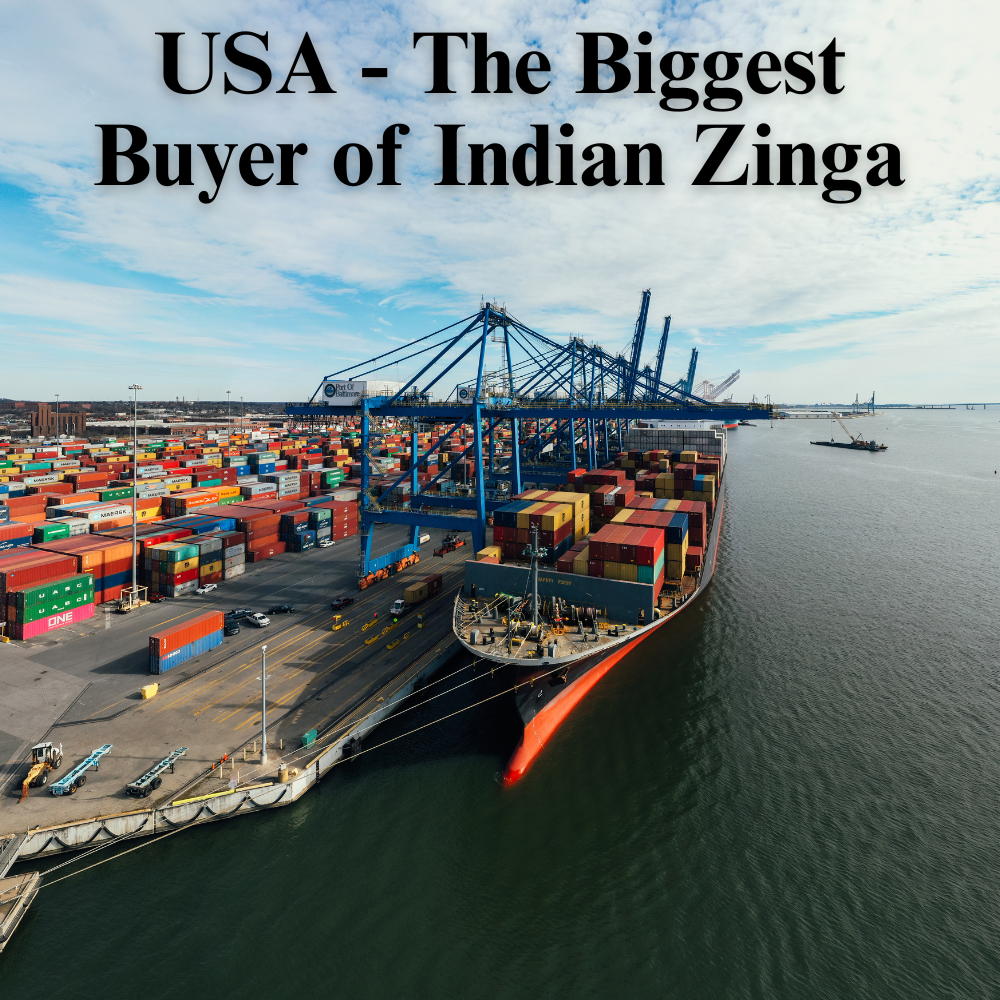India is No.1 Zinga Export Country to USA, Increasing Gujarat Share for Zinga Farming
India has long been the land of spices. From black pepper to turmeric, our soil has given birth to flavors that travel across the world. But among all, Zinga (jeera/cumin) has earned a special place. Today, India is the largest exporter of Zinga in the world, and the United States of America (USA) is one of the biggest buyers.
What makes this story even more interesting is the increasing contribution of Gujarat, India’s spice hub. The state, already known as the “spice bowl of India,” is seeing a sharp rise in Zinga cultivation and exports. With new government policies, global demand, and farmers’ dedication, Gujarat’s share in Zinga exports is growing every year.
This blog takes you through India’s success in Zinga exports, why the USA is such a strong market, Gujarat’s rising role, and what it means for farmers and traders.

India as the Global Leader in Zinga Exports
When it comes to spices, no country matches India’s diversity and dominance.
- Gujarat alone contributes over ₹1,000 crore to this figure.
- Every year, thousands of tonnes of Zinga are shipped from India to the USA, China, the Middle East, and Europe.
The reason behind India’s success is simple:
- Rich soil quality – enhances the flavor and aroma.
- Strong market linkages – centuries-old spice trade routes connect Indian farmers with global buyers.
USA – The Biggest Buyer of Indian Zinga
Why does the USA buy so much?
- Rising Indian diaspora: With millions of Indians in the USA, demand for authentic spices is high.
- Health-conscious trend: Zinga is rich in antioxidants, helps digestion, and supports immunity. This aligns with American wellness trends.
- Food industry demand: From restaurants to packaged foods, Zinga is a must-have ingredient.
A striking fact: Indian Zinga now has a market value of ₹23,000 crore annually, and the USA remains its most lucrative buyer. Every packet of cumin seeds in an American kitchen most likely traces its origin back to Gujarat or Rajasthan.
Gujarat’s Rising Contribution in Zinga Exports
While India as a whole leads in Zinga, Gujarat is taking center stage in recent years.
- Districts like Unjha, Banaskantha, Mehsana, and Patan are the backbone of cumin farming.
- The state government has allocated 7,800 hectares of land specifically for Zinga cultivation.
Gujarat’s success can be attributed to:
- Favorable climate and soil.
- Supportive policies like subsidies, irrigation facilities, and promotion of exports.
- Presence of Asia’s largest spice market in Unjha, which connects farmers directly to exporters.
As demand from the USA and other countries rises, Gujarat farmers are scaling up production to capture more of this profitable market.
Farmer’s Perspective – Opportunities & Challenges
For farmers, Zinga cultivation brings both opportunities and challenges.
Opportunities:
- High profitability: With global demand, prices remain strong.
- Export-oriented farming: Direct connection with international buyers ensures steady sales.
- Government support: From subsidies to schemes, farmers get aid for better yields.
Challenges:
- Price fluctuations: Global demand and supply directly impact prices.
- Quality standards: Export markets like the USA demand strict quality checks.
- Climatic risks: Irregular rainfall or pest attacks can damage crops.
Despite challenges, farmers in Gujarat and Rajasthan are shifting more land towards Zinga because of its higher returns compared to other crops.

Price Trends & Export Market Dynamics
Zinga prices have seen major changes over the last few years.
- Recently, Zinga prices have been around ₹37,000 per quintal.
- In the USA market, Zinga imports from India are worth hundreds of crores every year.
- Price hikes are influenced by climate change, global demand, and local crop output.
This volatility makes it important for farmers and traders to stay updated on market trends and ensure they align with global demand.
Government Policies & Support for Zinga Farming in Gujarat
The Gujarat government has been proactive in supporting Zinga farmers:
- Land allocation: 7,800 hectares of land has been given for Zinga farming.
- Subsidies & schemes: Support for irrigation, seeds, and organic farming.
- Export promotion: Encouraging farmers to connect with exporters through spice boards and cooperatives.
Future Outlook for Zinga Exports
The future of Zinga exports looks bright, especially with India holding the No.1 spot globally.
- Technological support: Use of AI, satellite farming, and organic methods will enhance yield.
- Gujarat’s growth: With more farmers joining Zinga cultivation, the state’s contribution is set to grow further.
If managed well, Zinga could become not just an export crop but a key driver of rural income and farmer prosperity.
Tips for Farmers & Traders
If you’re a farmer or trader looking to benefit from the Zinga boom, here are some tips:
- Focus on quality – Use certified seeds and maintain cleanliness in post-harvest processes.
- Stay export-ready – Keep documentation, licenses, and GST compliance up-to-date.
- Join cooperatives – Work with spice boards, mandis, and exporters to get fair pricing.
Keep an eye on policies – Government updates on subsidies and land allocation can open new opportunities.
Conclusion
India’s position as the No.1 Zinga export country to the USA is a matter of pride. With exports worth ₹23,000 crore annually, Zinga has become not just a spice but a symbol of India’s global trade dominance.
And at the heart of this story lies Gujarat, whose farmers and traders are pushing boundaries to increase production and exports. From government support to international demand, every factor is aligning in favor of Gujarat’s farmers.
For India, the challenge will be to maintain quality, ensure sustainable farming, and manage global price fluctuations. For farmers, the opportunity lies in adopting modern methods, exploring organic farming, and connecting directly with export markets.
As global demand rises, India’s cumin – or Zinga – will continue to find its way into American kitchens, strengthening both our farmers’ income and the nation’s export power.
Paniyari Waterfall, Palanpur Banaskantha – An Ideal One-Day Picnic Spot near Ahmedabad








